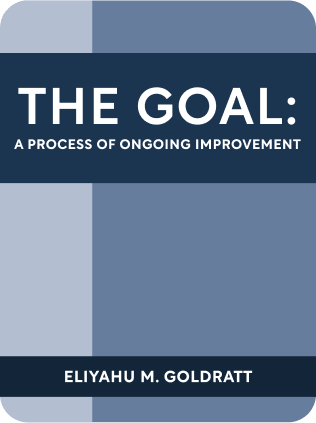

This article is an excerpt from the Shortform book guide to "The Goal: A Process of Ongoing Improvement" by Eliyahu M. Goldratt. Shortform has the world's best summaries and analyses of books you should be reading.
Like this article? Sign up for a free trial here .
What is a manufacturing process flow? Why is it relevant for improving output and revenue?
A manufacturing process flow represents the way production occurs. It helps you identify where your bottlenecks are so you can optimize the production process.
Keep reading for more about the manufacturing process flow and how to improve it.
Building Blocks of the Manufacturing Process Flow
Relationships between a bottleneck (X) and non-bottleneck (Y) can be summarized in the following 4 diagrams:
Y → X
- The non-bottleneck feeds to the bottleneck
- Y has excess capacity. Letting both X and Y run continuously will build up inventory in front of bottleneck X.
X → Y
- The bottleneck feeds the non-bottleneck.
- Y is starved for inventory to process and marches to the beat of X’s drum. This is totally fine, even if Y is idling at times. No inventory builds up in front of Y.
X → Assembly ← Y
- Parts passing through X and Y flow into a joint step of assembly.
- Working Y out of pace with X produces inventory in front of assembly.
X → Product A | Y → Product B
- Here X and Y are independently operating for separate marketing demands.
- If X cannot produce enough to meet market demand, then the constraint for product A is bottleneck X.
- If Y can produce more than enough to meet market demand, then the constraint for product B is not Y – it is market demand. Y can produce more than the market demands for the sake of “efficiency,” but this will lead to excess product B inventory, increasing costs.
In all these blocks, Y never determines throughput for the system. Throughput instead is determined by bottleneck X, or market demand.
The Massive Cost of the Bottleneck
Any time that the bottleneck isn’t working is lost time forever that cannot be made up at any other part in the manufacturing process flow.
An hour lost at the bottleneck causes a loss in total throughput equal to the hourly capacity of that bottleneck. This is an important concept.
- If the total throughput is a thousand dollars per hour, then the bottleneck is processing at a thousand dollars per hour, even if the literal operational costs or the parts going through it cost much less.
- Alternatively, take the entire operating expense of the factory, divided by the hours worked by the bottleneck – that’s the actual cost of the bottleneck.
In other words, a loss in the bottleneck means a loss to the entire operation, and should be viewed with such gravity
Other losses in effective throughput are also similarly costly. For example, feeding low-quality parts through the bottleneck will cause rejection later, leading to effectively lower throughput.
While time lost from the bottleneck can be made up for by hurrying non-bottlenecks, any extra effort here typically adds to operational expenses (eg overtime pay). Ideally, the bottleneck is simply maintained at peak capacity at all times.

———End of Preview———
Like what you just read? Read the rest of the world's best book summary and analysis of Eliyahu M. Goldratt's "The Goal: A Process of Ongoing Improvement" at Shortform .
Here's what you'll find in our full The Goal: A Process of Ongoing Improvement summary :
- How to increase your personal output
- How to increase your team's output
- Why obsessing over cost efficiency isn't going to help you with production






